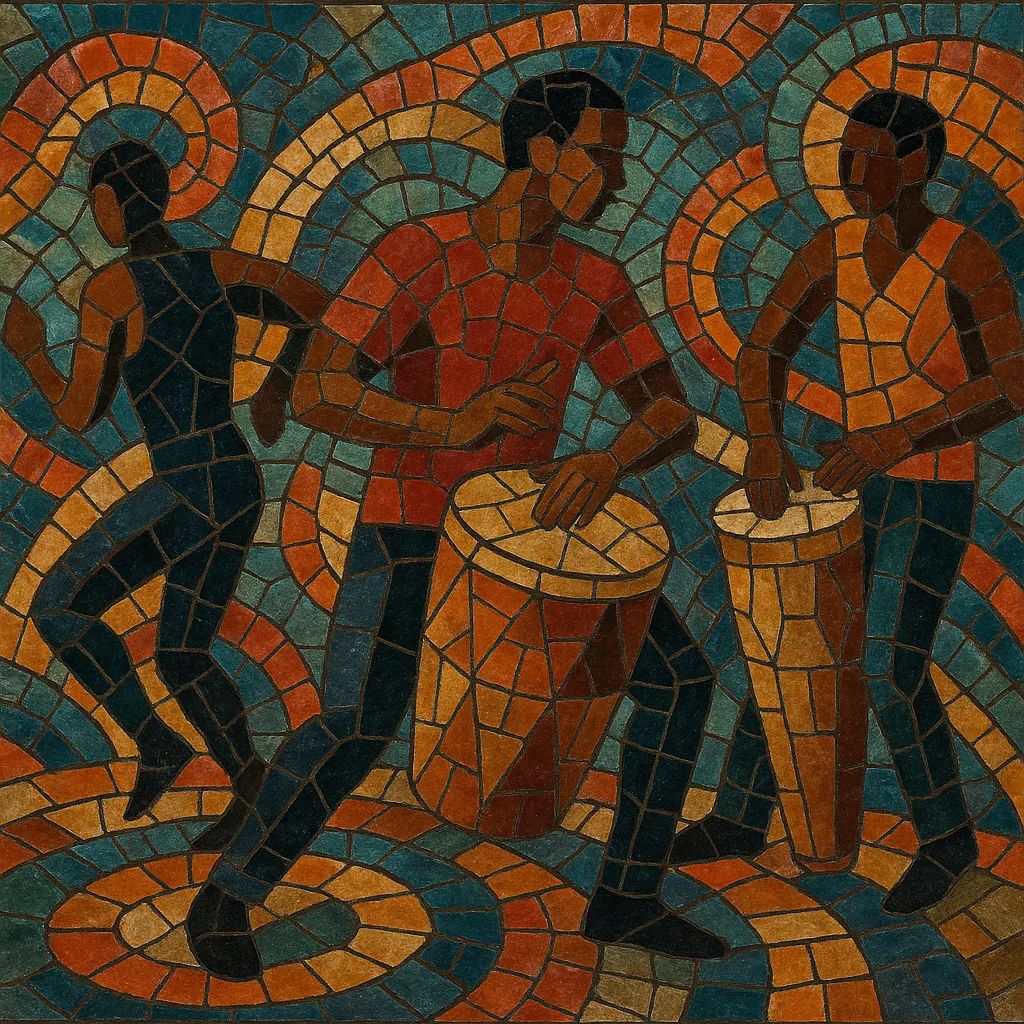Ritmada is a percussive, syncopated strain of Brazilian funk characterized by tightly patterned drums, swung grids, and an emphasis on groove over melodic content.
Built around punchy 808 "grave" bass, clipped claps, and tamborzão-derived percussion, the style sits mostly between 150–165 BPM and favors call‑and‑response vocal hooks suited for dance challenges. Compared to heavier mandelão-oriented beats, ritmada keeps the low end firm but leaves space for intricate rhythmic interplay and fast-footwork choreography.
It spread from baile funk parties and DJ edit culture to mainstream platforms through short‑form videos, DJ sets, and remix ecosystems, becoming a go‑to pulse for high‑energy, dance‑forward tracks across Brazil.
Ritmada emerged in Brazil in the late 2010s as DJs and beatmakers refined baile funk drum programming toward a more explicitly “ritmado” (rhythmic) feel. Drawing from the tamborzão lineage of Rio funk and the harder, sped‑up club energy, producers emphasized syncopation, quick claps, and rolling percussion while keeping the 808 "grave" front and center.
As São Paulo’s funk scene surged, DJs began tagging edits and instrumentals as “ritmada,” signaling dense but danceable percussion at 150–165 BPM. The grid is often swung, with kicks and rimshots interlocking in driving patterns that feel busier than straight 150 bpm but lighter than ultra‑minimal mandelão.
Short‑form video platforms, DJ packs, and YouTube channels helped ritmada explode beyond regional parties. Dance crews and influencers popularized signature steps, while MCs adopted compact, chant‑ready hooks. The style proved versatile, working as both instrumental DJ tools and vocal-centric singles.
Ritmada is a staple pulse within contemporary Brazilian funk. Producers use it as a chassis for mashups, remixes, and collaborative tracks, and its swung, kinetic feel continues to influence adjacent club sounds and car‑audio edits.


